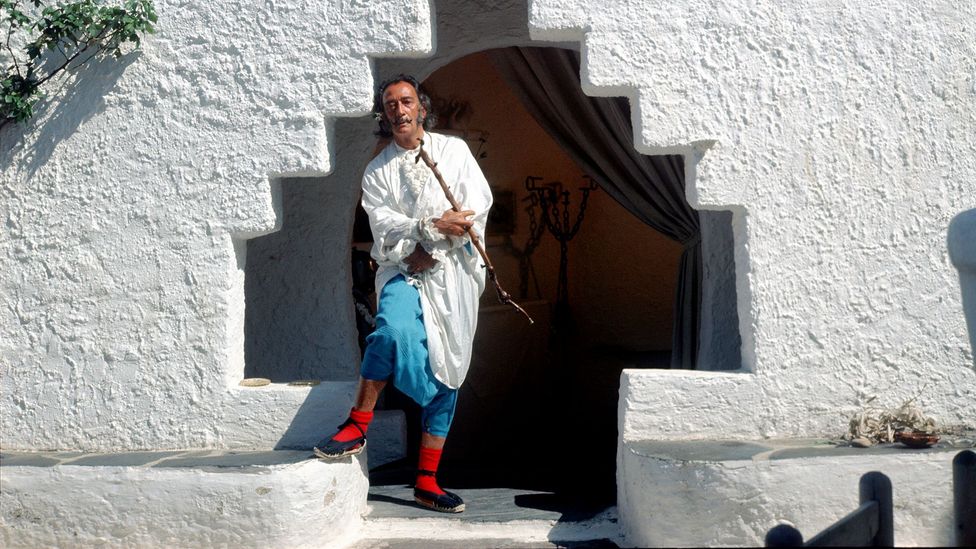Coco Chanel believed an interior is "a natural projection of the soul". Gilbert McCarragher, author of a new book on British filmmaker Derek Jarman's coastal house, Prospect Cottage, discovered the homes of cultural creatives offer a special insight into their lives, work and psyche: "There is something very personal about going into an artist's house" he tells the BBC.
We love to peep inside the houses and gardens, of the famous. And with cultural creatives, their homes are often artworks in themselves, a larger canvas or playground on which to work on their medium. According to Sam Lubell, author of Life Meets Art: Inside the Homes of the World's Most Creative People: "Homes do act as reflectors of their creators, they are extensions of people. It's an interesting collision – their taste and how they live… It's almost like another biography of someone."
Here are some of the best-loved home museums, from Graceland – the playground and final resting place of rock legend Elvis – to Charleston, where the Bloomsbury Group gathered.
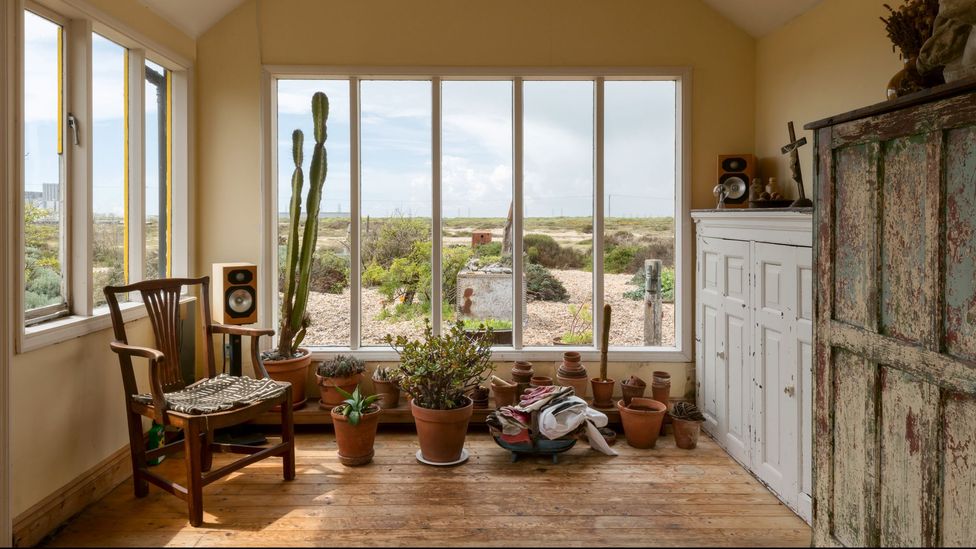
Derek Jarman's Prospect Cottage, Dungeness, Kent (Credit: Gilbert McGarragher)
1. Derek Jarman's Prospect Cottage, Dungeness, Kent, UK
It sits squat and dark on shingle, its sun-yellow door and windows standing out against the bleak Dungeness landscape, where the nuclear power stations, though inactive, still dominate. Prospect Cottage was a creative hub and sanctuary for Derek Jarman, filmmaker, artist, writer and gay-rights activist, from 1986 until his death in 1994. Day-trippers and art students arrived, then and since, trampling its pebbly unfenced garden. The house itself was off limits, until recently. In 2018 Jarman's companion, Keith Collins died, and his family asked photographer Gilbert McCarragher (a friend and neighbour in Dungeness) to document the house. His book, Prospect Cottage: Derek Jarman's House is loving and meticulously observed – gardening tools set against a weathered wall, jars of pencils, even the floorboards' woodworm holes. The cottage, McCarragher says, is where Jarman "was closest to himself, a beloved home and garden". He felt its "magic energy" that "sucks you in, and directs you as it wants to around the house." The house is now open to small groups and artists' retreats.
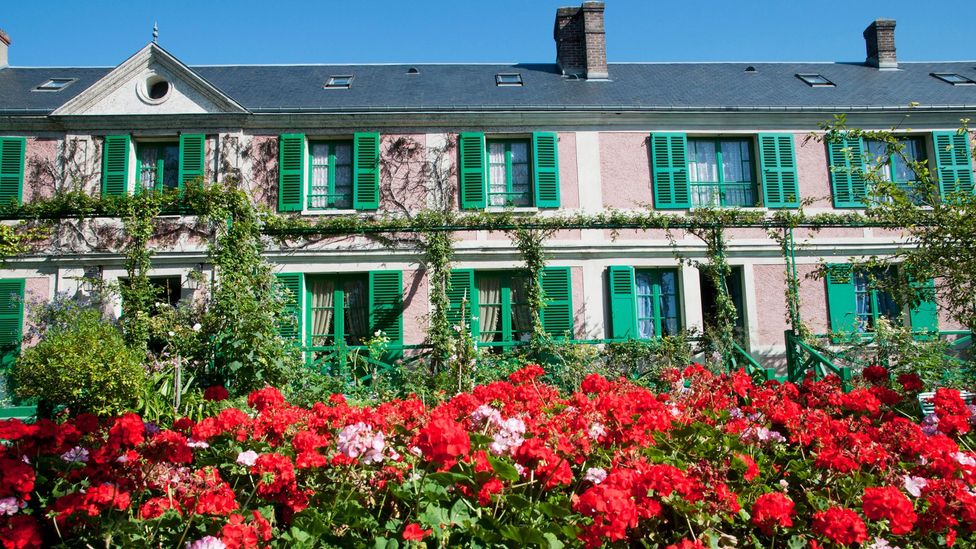
Claude Monet's House and Garden, Giverny, France
2. Claude Monet's House and Gardens, Giverny, France
Each year, more than half a million visitors descend on Giverny, Normandy, where artist Claude Monet lived for 43 years, from 1883 to his death in 1926. They see the artist's dining room, where Japanese prints hang on yellow walls; the Little Blue Lounge, full of paintings (now reproductions) by his friends Cézanne, Renoir and Signac; and the pantry where the tea, olive oil and spices were kept. For many, the main attraction is the gardens, especially the water garden where Monet created his Water Lilies series – 250 paintings made between 1840-1926, his most famous works. Monet was a passionate gardener; he dug the first pond for the water garden in 1893, installing a Japanese bridge with wisteria floating above, and planting bamboo, weeping willows and of course the famous lilies. It was his inspiration for more than 20 years. Géraldine Lefebvre, director of the Musée d'Art Moderne, André Malraux, calls it "a masterpiece of land art… Monet brought his pond and water lilies to life, crafting even the smallest thickets. This garden is perhaps his best creation". The house and garden are open from April to October.
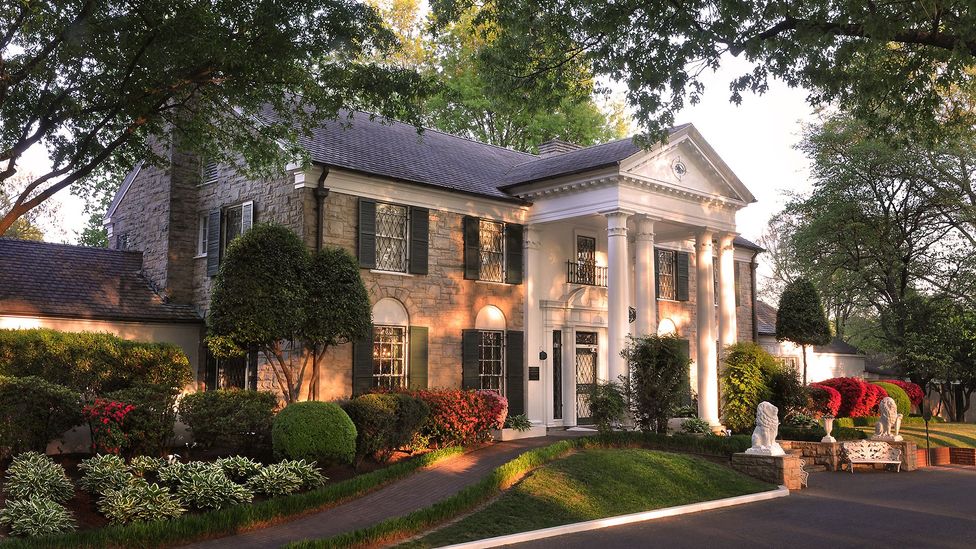
Elvis Presley's Graceland (Credit: Courtesy of Graceland)
3. Elvis – Graceland, Memphis, Tennessee, US
With its Corinthian columns and topiary bushes, the face of Graceland is all handsome Colonial Revival style. Step inside, though, and you'd better keep your sunglasses for its "flamboyantly themed rooms… gadgetry, esoteric meditation zones, sumptuous shag-pile carpeting… furniture dripping in gold…", as described by Architectural Digest, adding that this is "one of greatest homes in America". Graceland was of course home to rock giant Elvis Presley, who bought it aged 22 as his career was going meteoric. It was his main home until he died there from a heart attack in 1977. Open to the public for 40 years, you can see the Jungle room, with astroturf flooring; a 15ft-long sofa; 88 of the King's jumpsuits; cars and two airplanes he travelled in; and the kitchen he insisted always be stocked with fried peanut butter banana sandwiches. Elvis is buried in the Meditation Garden, with his parents and daughter Lisa-Marie. In his biography of Elvis, Albert Goldman wrote Graceland "appears to have been lifted from some turn-of-the-century bordello". There's no denying its lasting popularity – and status as a symbol of the American Dream.
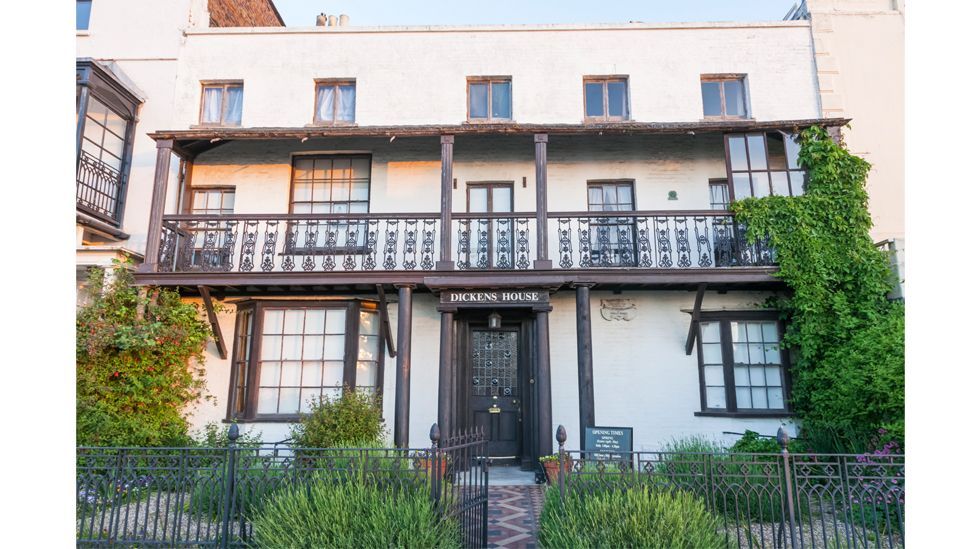
Dickens House Museum (Getty Images)
4. Dickens House Museum, Broadstairs, Kent, UK
The Victorian novelist Charles Dickens laid his hat in many homes, including Gad's Hill Place, Kent, from 1856 to his death in 1870 (it's now a school, with limited tours). Of course, London was key in his life and books, from Oliver Twist to The Old Curiosity Shop. Forty-eight Doughty Street, London W1 (his home from 1837 to 1839), is now a Dickens museum. But it was at Broadstairs, a seaside town in Kent, that the writer spent his summers, from 1837-1851, and that he called "our English watering place". Broadstairs has a Dickens festival in June, and its Dickens House Museum holds memorabilia, such as his writing box and letters. In one, he writes of a wonderful day and "the air so brisk and bracing as it is nowhere but at Broadstairs… Veeve Broadstairs!" While at Bleak House (then Fort House), he wrote David Copperfield. It's closed to the public, but novelist Barbara Kingsolver managed a visit. She'd been wrestling with an idea, about the opioid epidemic and poverty in Appalachia. While at Dickens's desk, she heard a message, she told Harpers Bazaar, that said "yes, people will read this… let the child tell the story. Right that minute I saw my Demon… my David Copperfield." And the Pulitzer-winning bestseller Demon Copperhead was born.
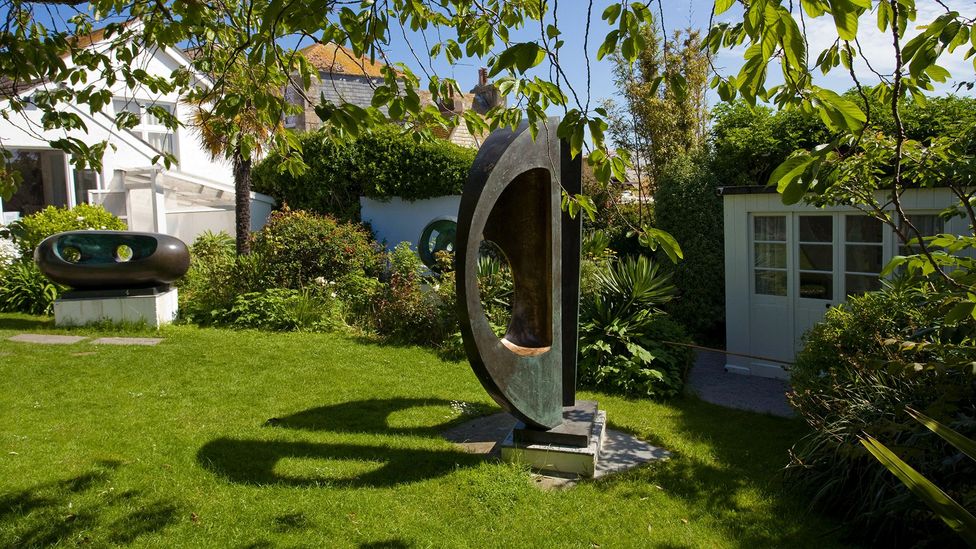
Barbara Hepworth Museum and Garden, St Ives, Cornwall (Credit: Alamy)
5. Barbara Hepworth Museum and Sculpture Garden, St Ives, Cornwall, UK
"Finding Trewyn Studio was a sort of magic," wrote Barbara Hepworth. "Here was a studio, a yard and garden where I could work in open air and space." The British sculptor, who was born in Yorkshire in 1903, bought the studio and garden in the centre of St Ives in 1949. "It is completely perfect for me," she wrote. She built a stone carving studio and yard for herself, and designed the garden, planting it with evergreen trees and architectural shrubs as an open-air gallery for her sculptural forms. Hepworth quickly became established as a prominent St Ives artist, and is remembered as a leading figure in modernist art. Today, visitors visit the museum, and stroll the delightful gardens, taking in the Cornish air and sea views in the presence of Hepworth's monumental works, such as Two Forms (1969), a divided circle each half scored with a hole, her signature. While inside the house they'll find more delicate works, such as Infant, a carved Burmese wood sculpture of her first baby, Paul, made in 1929 – a "beautiful… strong and tender" piece, says the museum's Tricia Kings, adding that Hepworth was "a working mother who loved her family very much, which shows in lots of her work". A timeline with pictures from her life is a moving testament – her career highs, love and tragedy, including the loss of her son Paul in the war, and her own death in 1975 in a fire at Trewyn, the place she loved with her heart and soul.
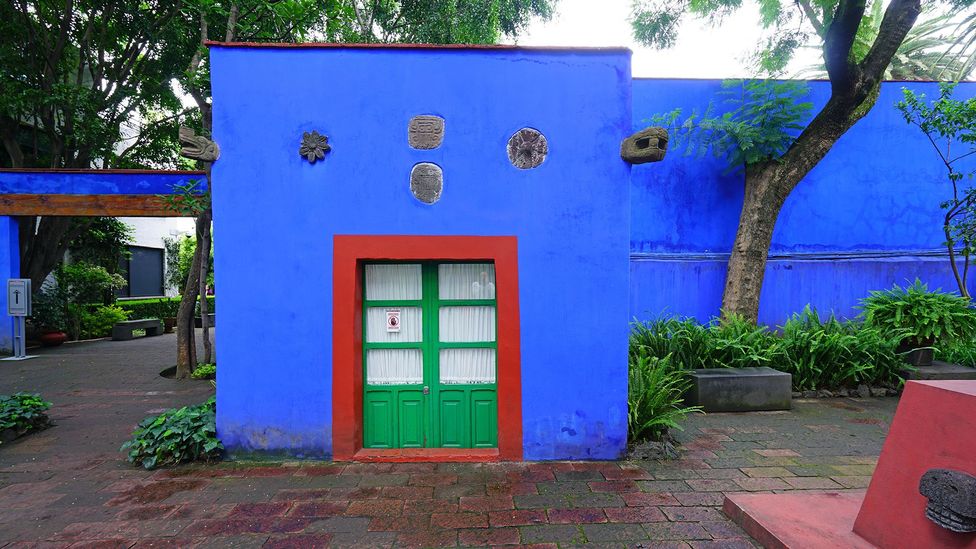
Frida Kahlo's Casa Azul
6. Museo Frida Kahlo, Coyoacán, Mexico
La Casa Azul (The Blue House) was birthplace of Mexico's most famous artist, Frida Kahlo, and her home until her death in 1954. It was her marital home with painter Diego Rivera, the scene of their passionate and often painful relationship. Today it's painted in the vibrant colours Kahlo loved – cobalt blue, salmon pink, vivid green – and has been a museum since 1958, at the artists' bequest. With an archive of more than 45,000 pieces, 2,000 on permanent display, it features paintings, such as Kahlo's Viva La Vida (Long Live Life), folk art, Pre-Columbian sculpture, photographs, books and her distinctive outfits and shoes. The garden is an exotic theatre for cacti, papier-mâché skeletons and a pyramid that Rivera designed blending modern and Pre-Columbian art. Crutches, corsets, and a wheelchair are sad testaments to the life-changing trolley-car accident Kahlo suffered at 18 that haunted and inspired her life's work. In the kitchen is a recipe for her mole sauce; while an altar-like dresser bears an urn, her final resting place.
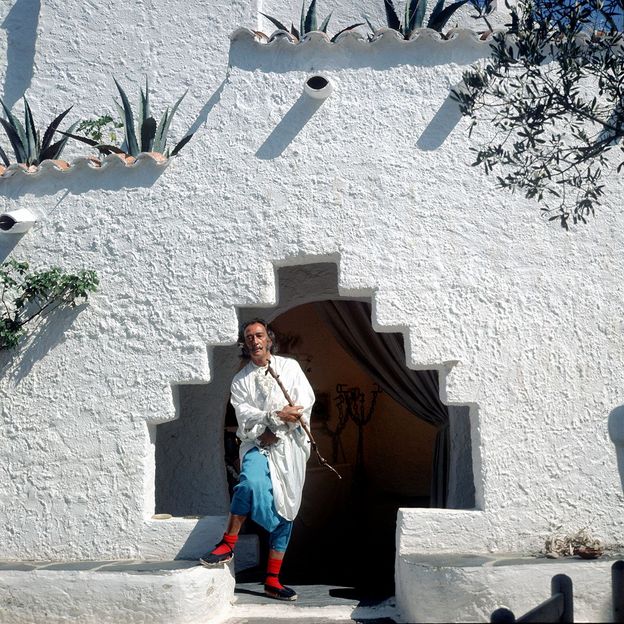
Salvador Dalí House Museum, Portlligat, Spain (Credit: Getty Images)
7. The Salvador Dalí House-Museum, Portlligat, Spain
When it comes to cultural behemoths, sites often compete to be the "important" home – artist Salvador Dalí is no exception. The Dalí-Theatre Museum in Figueres and Castle of Pubol, both in Spain, are both key sites, but the house Dalíbuilt himself at Portlligat was the only lasting home and studio he ever had, says Montse Aquer, co-writer of a 2017 documentary The Secret Life of Portlligat: Salvador Dalí's House. He adds that to be there is "to deeply understand Dalí". In 1930, the artist moved into a small fisherman's hut in Portlligat; he loved its light, landscape and isolation, and found it the ideal place to work. He meant it to be small and "womb-like" but, Aquer tells the BBC, it expanded over the years into "a real biological structure… each new pulse in our life had its own new cell". With the surrounding landscapes of Cadaqués and Cap de Creus, it was a refuge for Dalí and his enigmatic wife and model, Gala, for 50 years. Sights here include a giant white egg balanced on a red-tiled roof; melting, perspective-bending structures; and a giant stuffed bear-and-umbrella-stand in the lobby. As in the best Surrealist dreams, expect the unexpected.
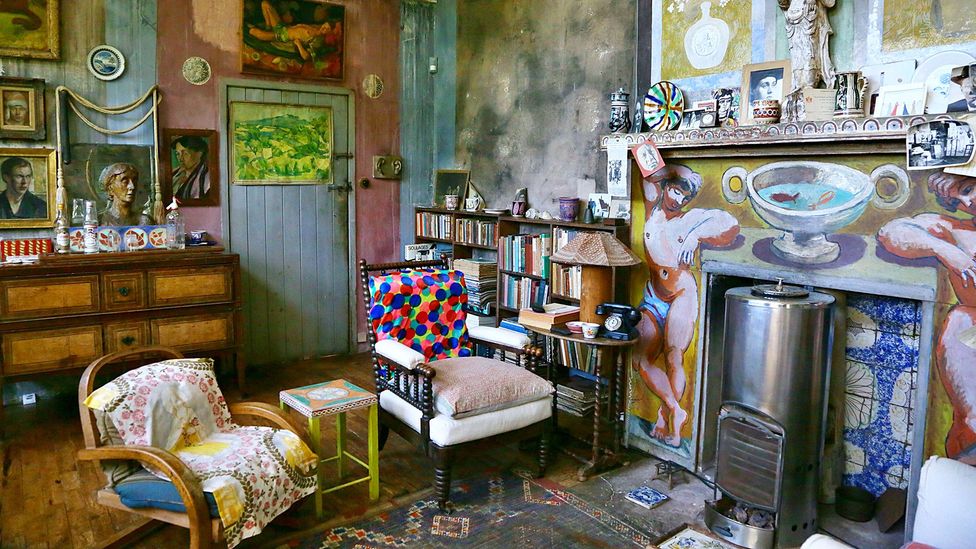
Charleston Farmhouse, Firle, East Sussex, UK (Credit: Alamy)
8. Charleston Farmhouse, Firle, East Sussex, UK
Charleston was the country retreat of artist couple Vanessa Bell and Duncan Grant, and a hothouse for a set of radical English artists and thinkers, known as the Bloomsbury Group: Bell's sister, Virginia Woolf, Lytton Strachey and John Maynard Keynes among them. The farmhouse, in the leafy East Sussex village of Firle, was a wreck when they moved in, in 1916, but the artists set to painting every inch of wall, doorknob and stick of furniture, a frenzy of embellishment that extended to the garden and beyond. "Vanessa Bell was groundbreaking, one of the first artists in Britain to work in a fully abstracted vein," says curator Katy Hessel. Charleston is a beautifully preserved testament to Bell's passion for the European modernist style (Gauguin, Van Gogh, Matisse). Sixty years' worth of loving art-making wrapped up in a quaint English country house and gardens visit – what's not to like?
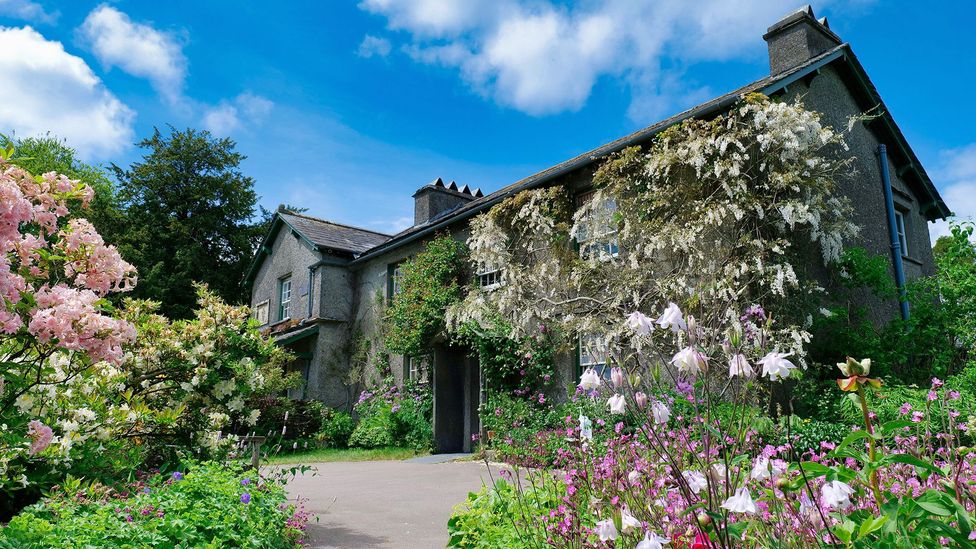
Beatrix Potter's house, Hill Top, Cumbria, UK
9. Beatrix Potter, Hill Top, Cumbria, UK
Stroll into Hill Top, in the quaint village of Sawrey in the Lake District, and you will find a fire in the hearth, a sun hat on the table, muddy gardening shoes on the floor – as if the owner had just popped out. That's just how children's author Beatrix Potter wanted her beloved Cumbrian home to appear to visitors, now that it is a museum. Potter (1866-1943), who was raised in an affluent family home in Kensington, saw London as "her unloved birthplace". Her passions for illustration and animals paired so well in her children's books, that characters she created, like Jemima Puddleduck and Tom Kitten, remain popular today. In 1905, while visiting the Lakes, Potter found 17th-Century Hill Top farm; she bought it with the profits of her first books, including The Tale of Mrs Tiggy-Winkle. It was "as nearly perfect a little place as I ever lived in," she wrote. You'll find objects immortalised in her stories: the grandfather clock from The Tailor of Gloucester; a dresser from The Tale of Samuel Whiskers. And the wild flowers of its cottage garden, not missing its vegetable patch – where you may glimpse angry Mr McGregor chasing Peter Rabbit who's been eating his runner beans again.
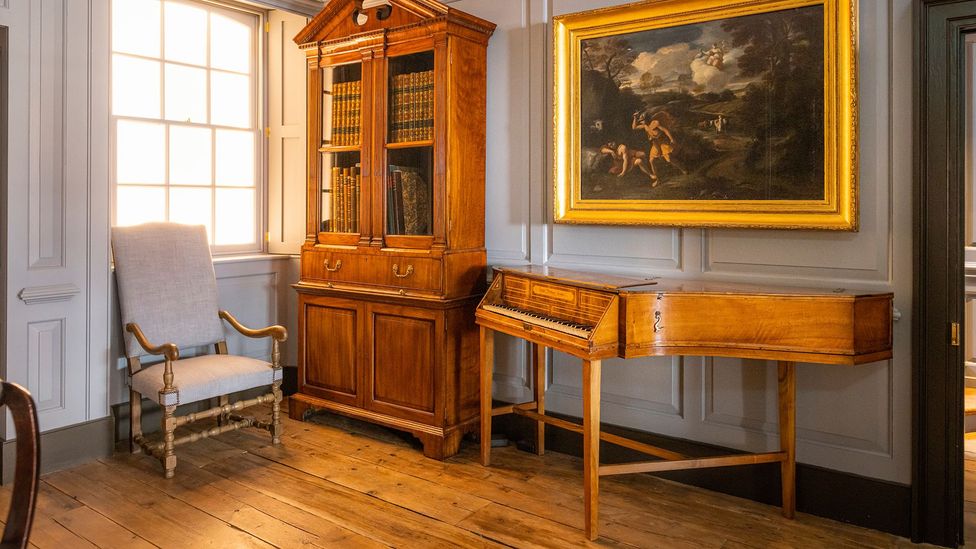
Handel Hendrix House, London, UK (Credit: Christopher Ison)
10. Handel Hendrix House, 25 Brook Street, London, UK
Look up at the entrance to 25 Brook Street and there's a blue plaque on the wall, because the premises above the neat Mayfair townhouses were once home to two of the greatest musicians to ever have lived in London. Handel Hendrix House is made up of two residences: 25 Brook Street, where the German-British Baroque composer George Frideric Handel lived; and a flat next door, home to US rock musician Jimi Hendrix. As the museum says, they were "separated by a wall and 200 years". Handel was born in 1685; his musical genius took him first to Italy in his 20s, and then to London in 1710. Established in English society, in 1723 he leased the house at 25 Brook Street, which was his home for 36 years, till his death in 1759. Hendrix, meanwhile, was born in 1942, and arrived in London in 1966, shot to fame within nine months, with two singles (Hey Joe, Purple Haze) and a debut album (Are you Experienced?). The guitarist and singer lived in a flat at 23 Brook Street from 1968. On learning Handel had lived next door, he bought copies of his Messiah and Water Music compositions. A more unlikely musical pairing is hard to imagine.
--
If you liked this story, sign up for The Essential List newsletter – a handpicked selection of features, videos and can't-miss news delivered to your inbox every Friday.
If you would like to comment on this story or anything else you have seen on BBC Culture, head over to our Facebook page or message us on X.
